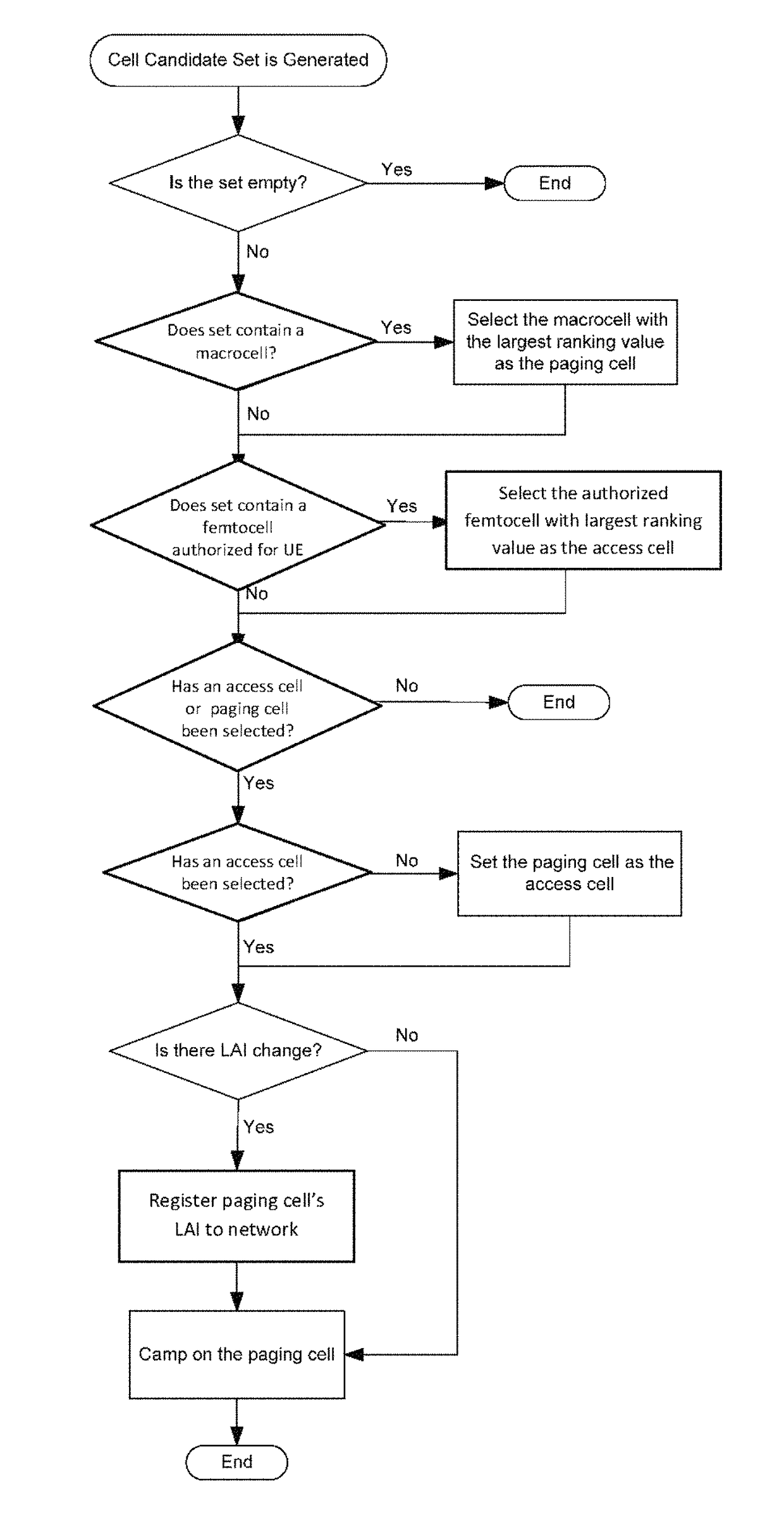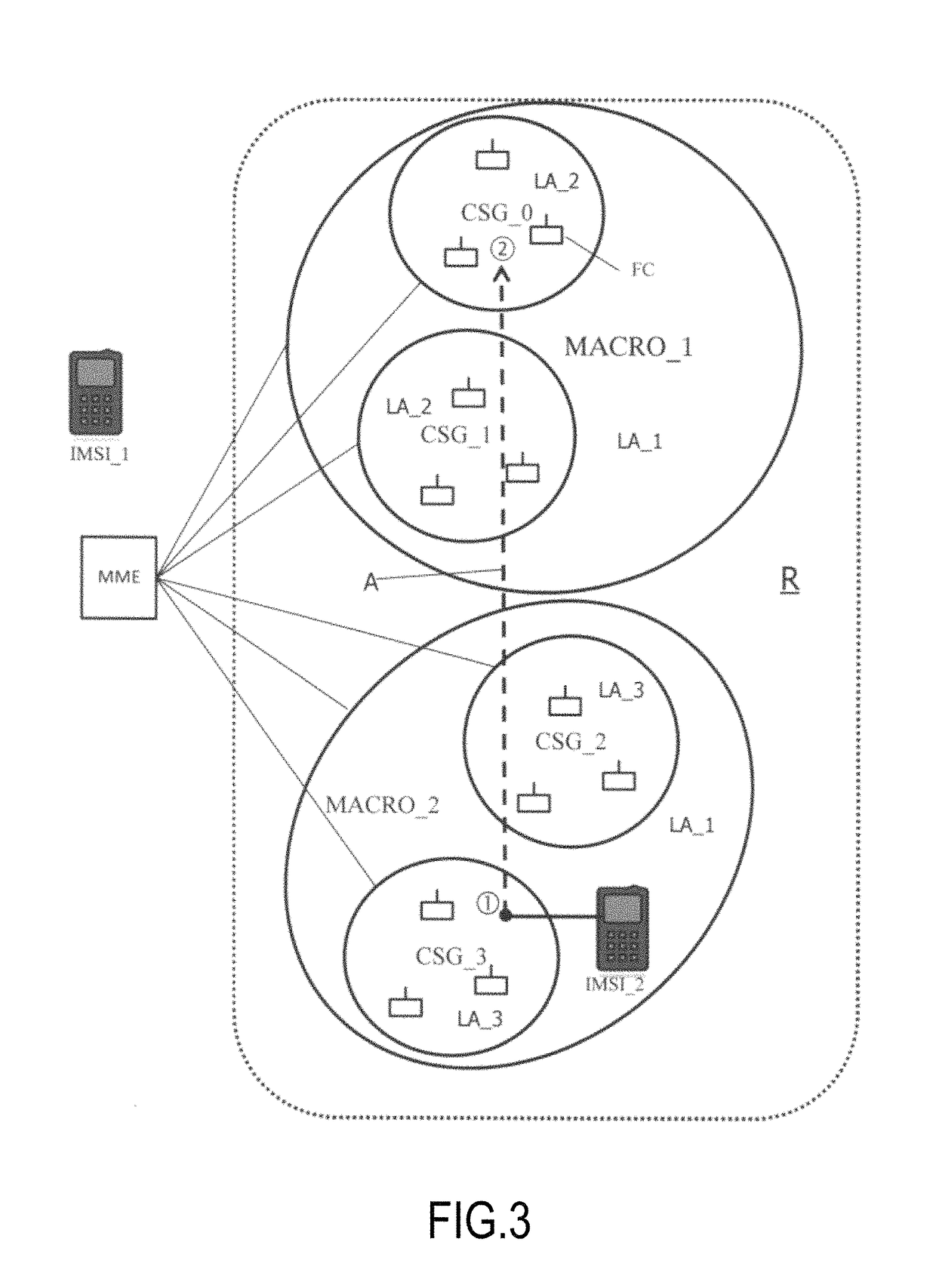Paging in mobile networks using independent paging cells and access cells
a mobile network and access cell technology, applied in the field of mobile communications, can solve the problems of sacrificing access characteristics, reducing the efficiency of paging process, and affecting the mobility of user equipment (ue)
- Summary
- Abstract
- Description
- Claims
- Application Information
AI Technical Summary
Benefits of technology
Problems solved by technology
Method used
Image
Examples
Embodiment Construction
[0070]Certain embodiments of the present invention will now be described with reference to a cellular mobile communications network that includes macrocells and femtocells. However, it is to be understood that the invention is not limited to networks including macrocells and femtocells. Indeed, application of the present invention can provide advantages in cellular mobile networks that include cells of only one size class (or, even, cells of uniform size).
[0071]FIG. 4 is a flow chart illustrating steps a method according to one embodiment of the invention. Specifically, according to this method the UE is configured to select two types of cells in its cell selection or reselection procedure. One of the selected cells is termed the paging cell, the other is termed the access cell. As indicated above, according to certain paging procedure management methods embodying the invention, the UE selects a paging cell based on considering the paging capabilities of the different available cell...
PUM
 Login to View More
Login to View More Abstract
Description
Claims
Application Information
 Login to View More
Login to View More - R&D
- Intellectual Property
- Life Sciences
- Materials
- Tech Scout
- Unparalleled Data Quality
- Higher Quality Content
- 60% Fewer Hallucinations
Browse by: Latest US Patents, China's latest patents, Technical Efficacy Thesaurus, Application Domain, Technology Topic, Popular Technical Reports.
© 2025 PatSnap. All rights reserved.Legal|Privacy policy|Modern Slavery Act Transparency Statement|Sitemap|About US| Contact US: help@patsnap.com



